Low Miles Lightweight: Series 1 Lotus Elise
Sean Rooks | August 22, 2025
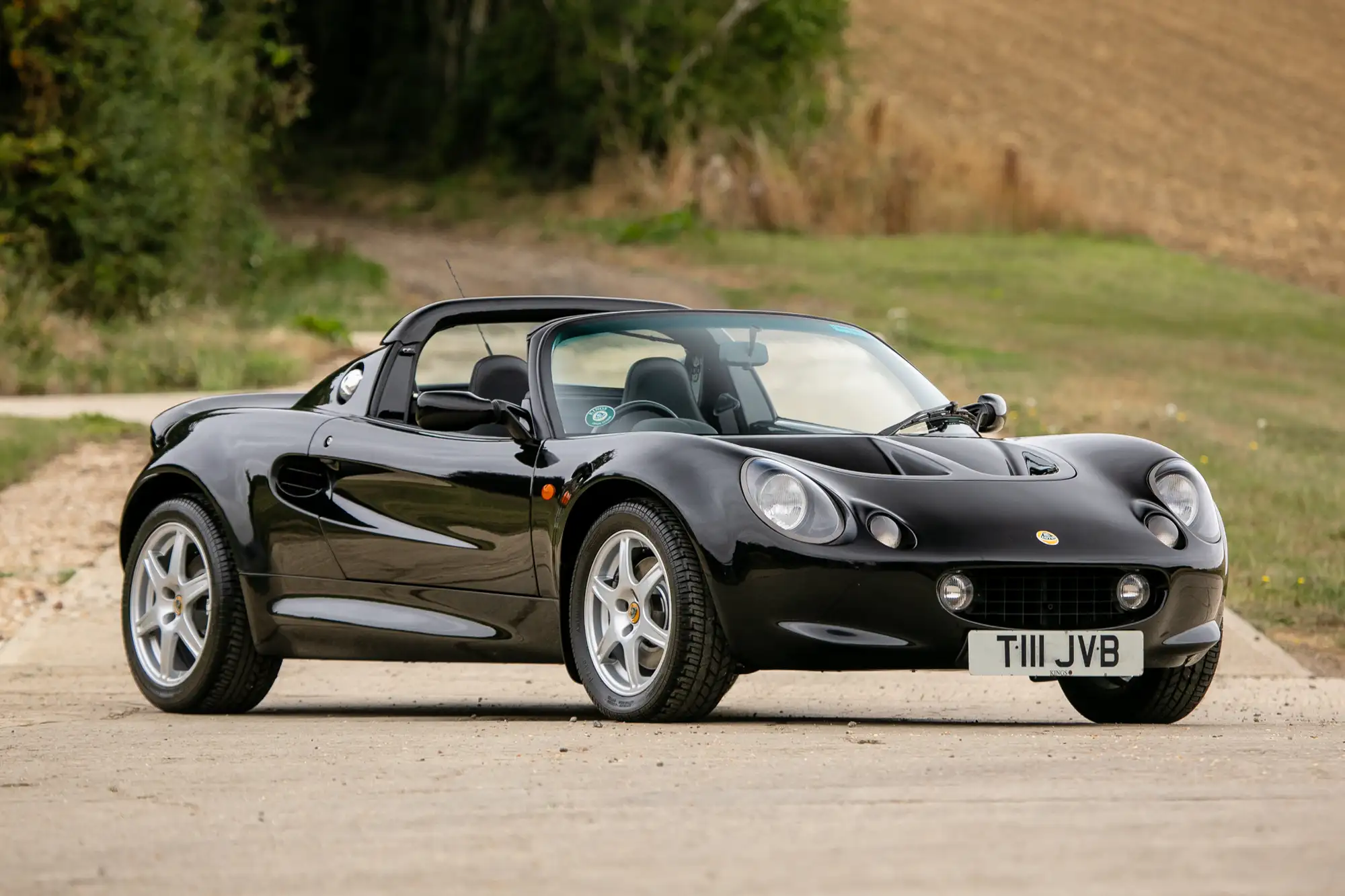
Though my tendency to overcomplicate things would suggest the opposite, I admire cars built to a singular purpose or philosophy. Porsche built the sports car he couldn’t find, but always wanted. Mazda strived to build an entry level sports car that filled the void left by British manufacturers in the United States. Lotus cars were built on the idea of “simplify, then add lightness.” Could today’s Good Find Friday car, a 1999 Series 1 Lotus Elise, be a classic on the rise?
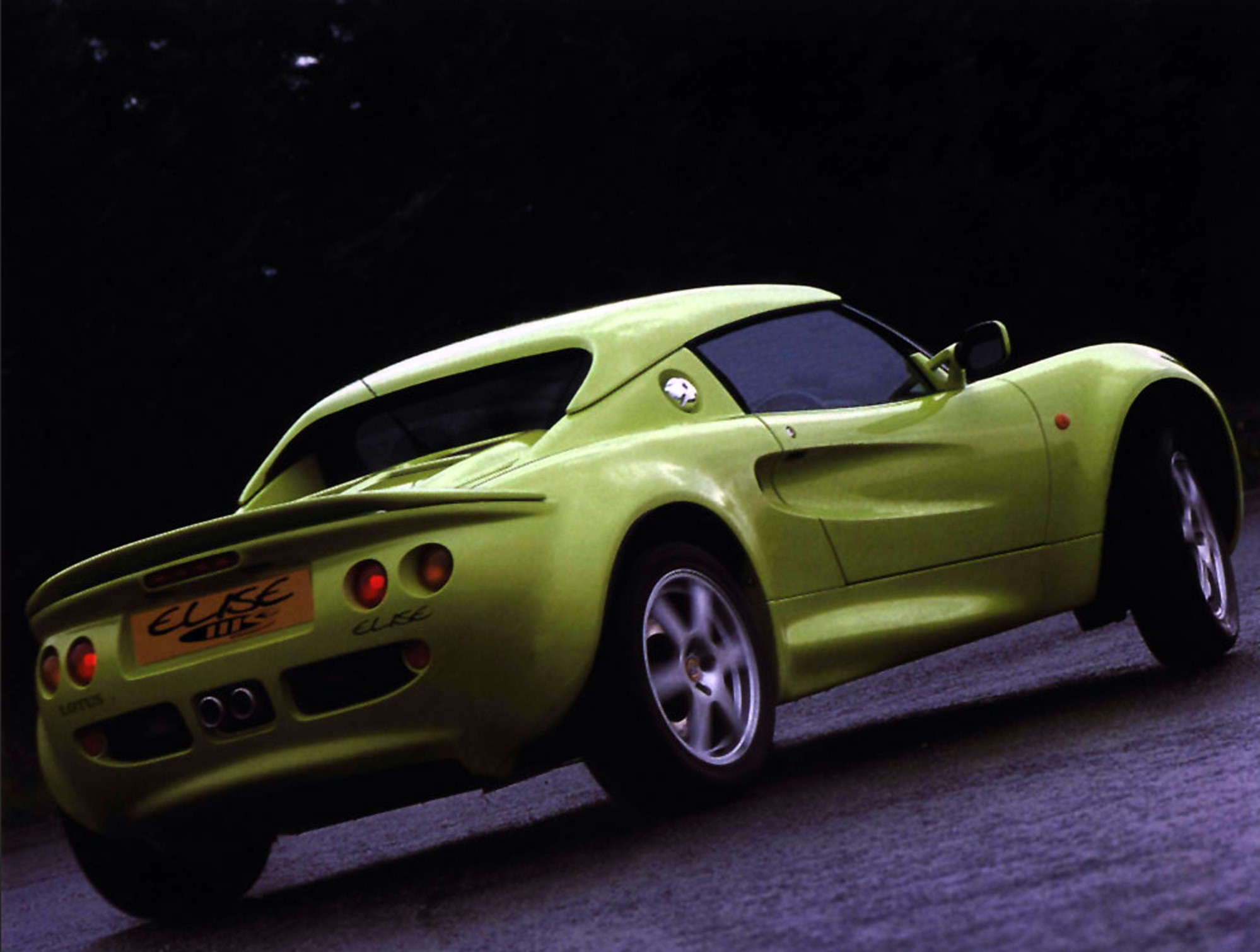
Lotus Cars is a British sports car manufacturer founded in 1952 by engineer Colin Chapman, who built the company’s reputation on lightweight design and clever engineering. From its earliest models to its success in Formula One, Lotus became known for prioritizing handling and efficiency over sheer horsepower.
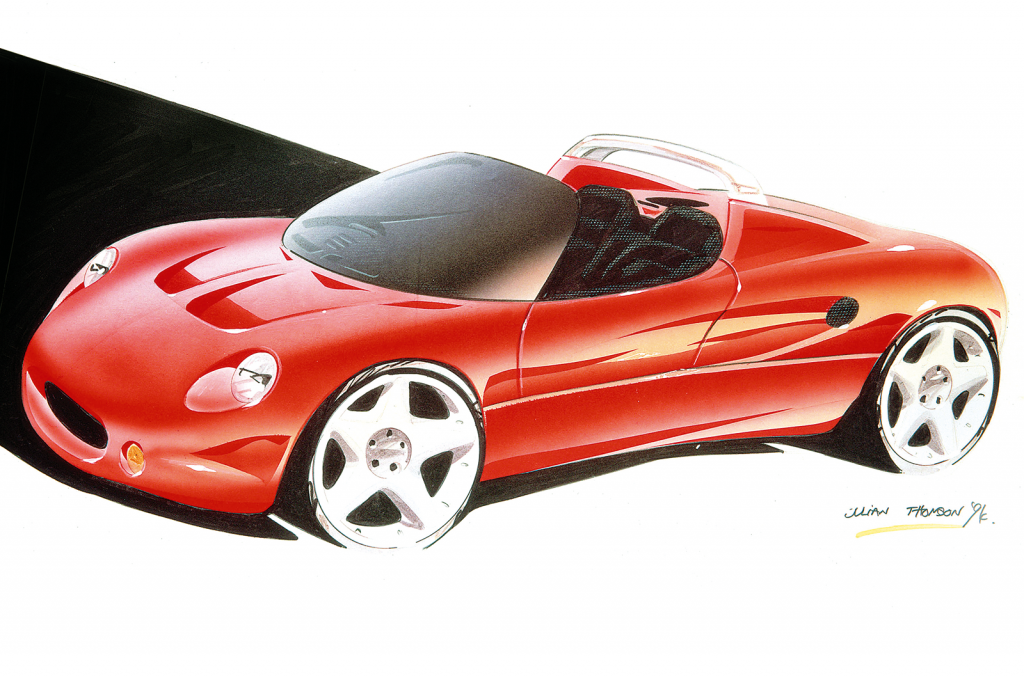
Chapman’s innovations, including the use of monocoque construction and ground-effect aerodynamics, influenced not just Lotus but the wider automotive world. Though the company has experienced changes in ownership and periods of financial difficulty over the decades, it has stayed true to its founding philosophy of “simplify, then add lightness,” a principle that continues to define the brand’s identity.
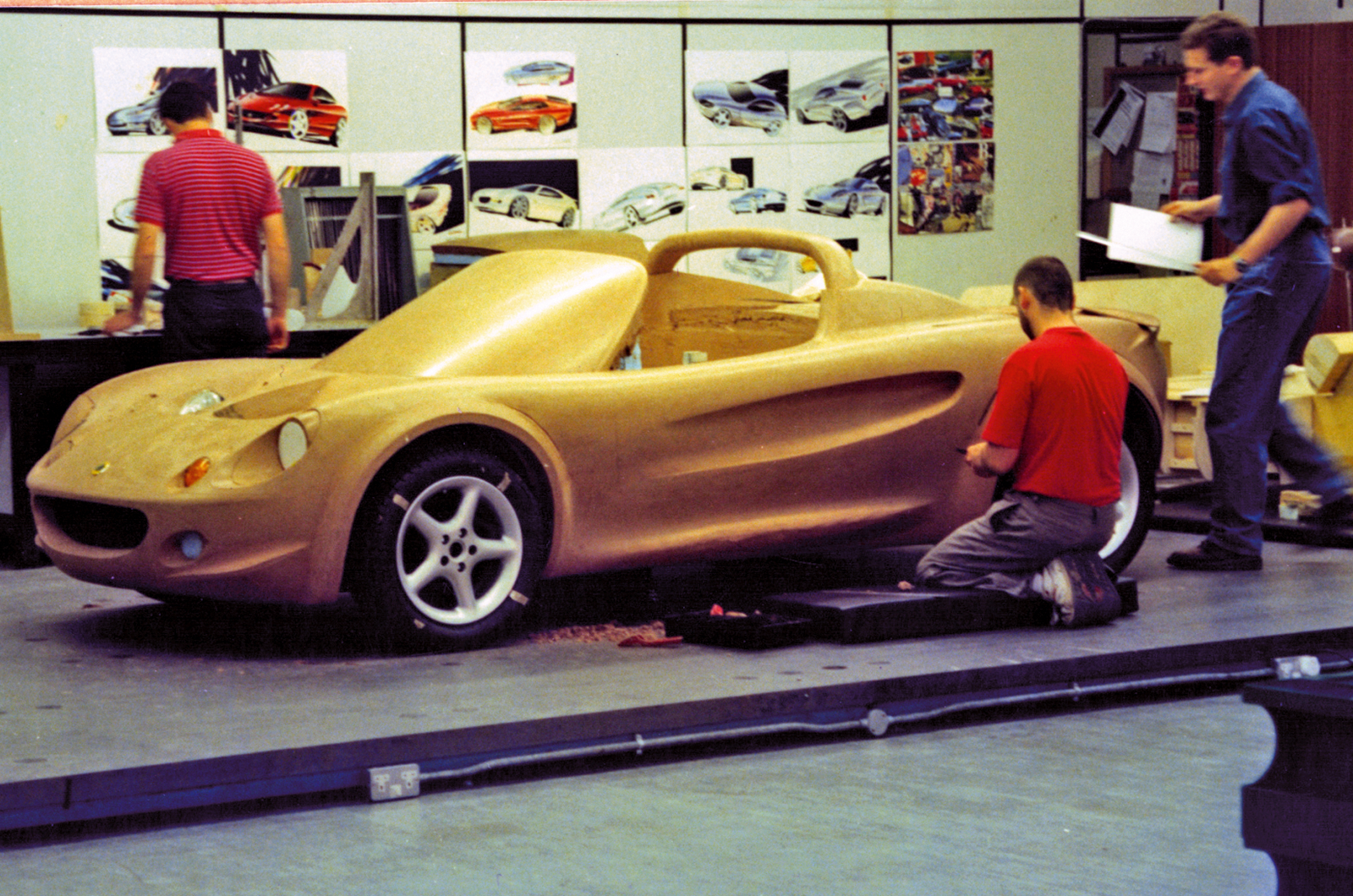
The Series 1 Lotus Elise, conceived in the mid-90s, launched in 1996 and produced until 2000, distilled that philosophy into one of the purest sports cars of its time. Its bonded aluminum chassis was a groundbreaking innovation, providing remarkable rigidity at a fraction of the weight of traditional designs, keeping the car under 725 kilograms.
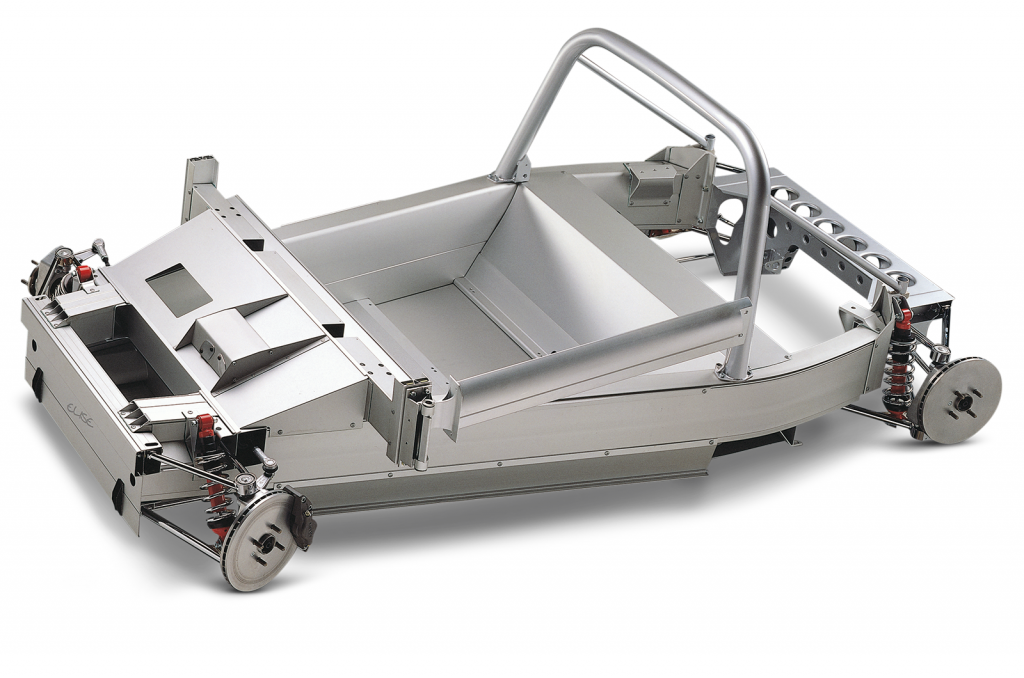
A 1.8-liter Rover-sourced engine powered the Elise and delivered just 118bhp, but its real appeal was in the way it cornered, steered, and communicated with the driver. The stripped-down interior, lightweight fiberglass body, and removable roof underscored its focus on driving over comfort or luxury. At a time when many sports cars were getting heavier and more powerful, the Elise proved that lightness and balance could deliver a more rewarding experience, and it quickly earned a reputation as one of Lotus’s defining achievements.
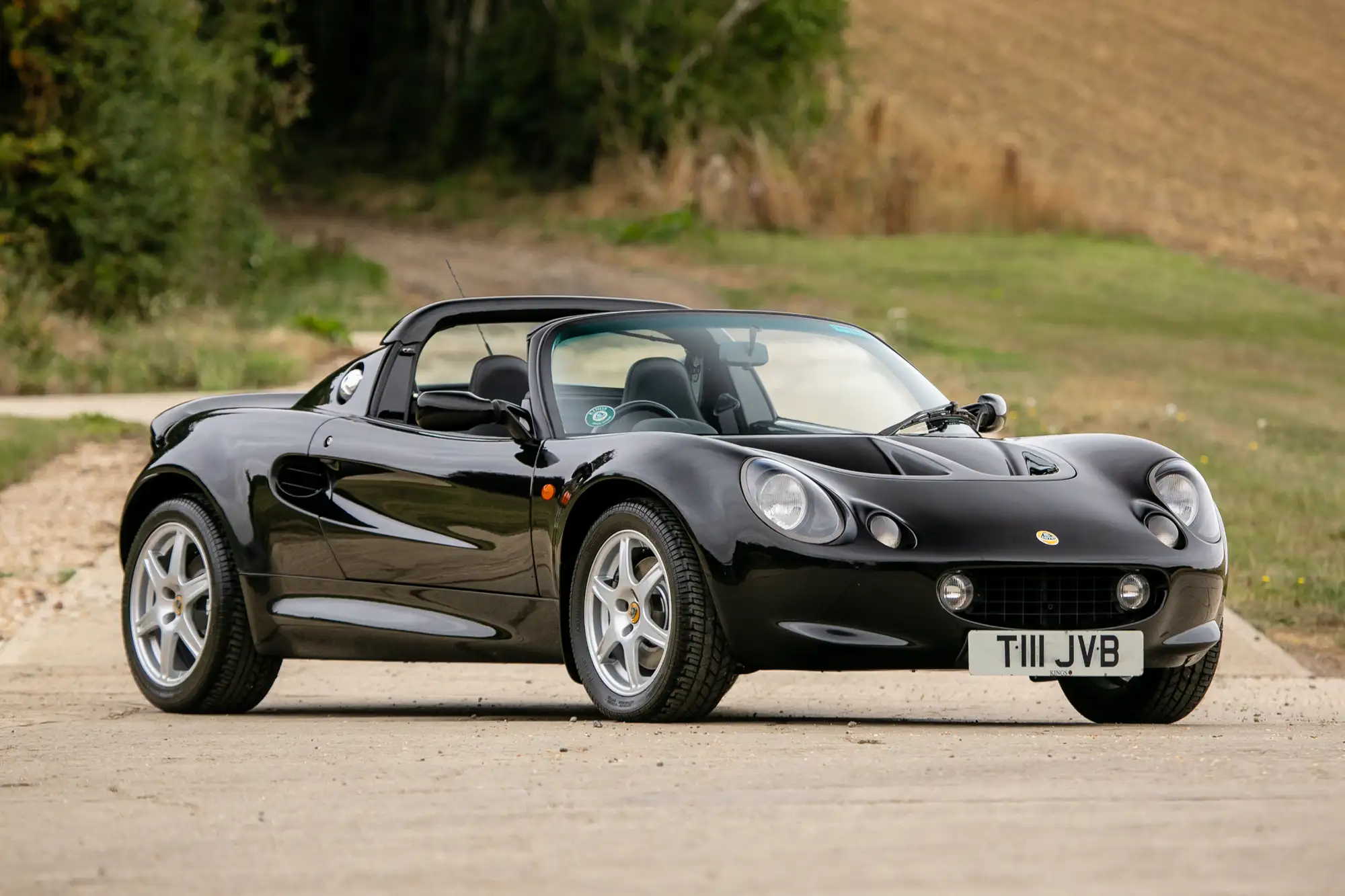
Today’s Good Find Friday car is a Series 1 Lotus Elise 111S with just 5,115 original miles. It’s one of a number of modern classics coming up for sale in Iconic Auctioneers’ Silverstone Festival Sale.
This Lotus Elise appears to be painted in an exterior finish of Phantom Black over a black interior. It is said that the car was bought new at Kings Lotus of Warwick in England, and has sat in storage for much of the last ten years.
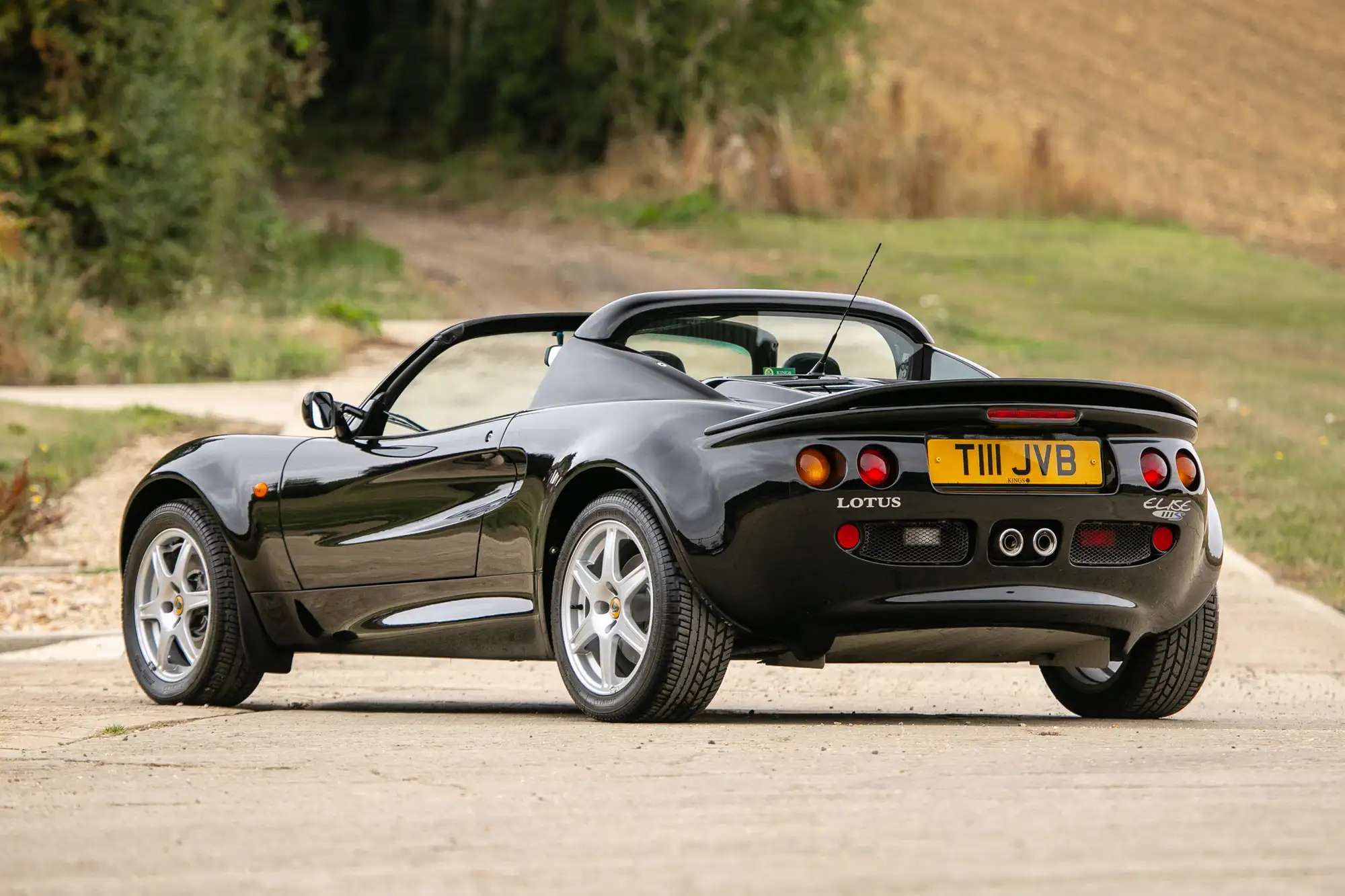
Exterior features include compact, curvaceous styling, deep aerodynamic scallops in the hood, fog lights in the central front radiator grill, Targa-style top, rear spoiler and twin centrally exiting exhaust pipes. Unsurprisingly, the body appears to be in excellent condition, given its long period of storage and low miles.
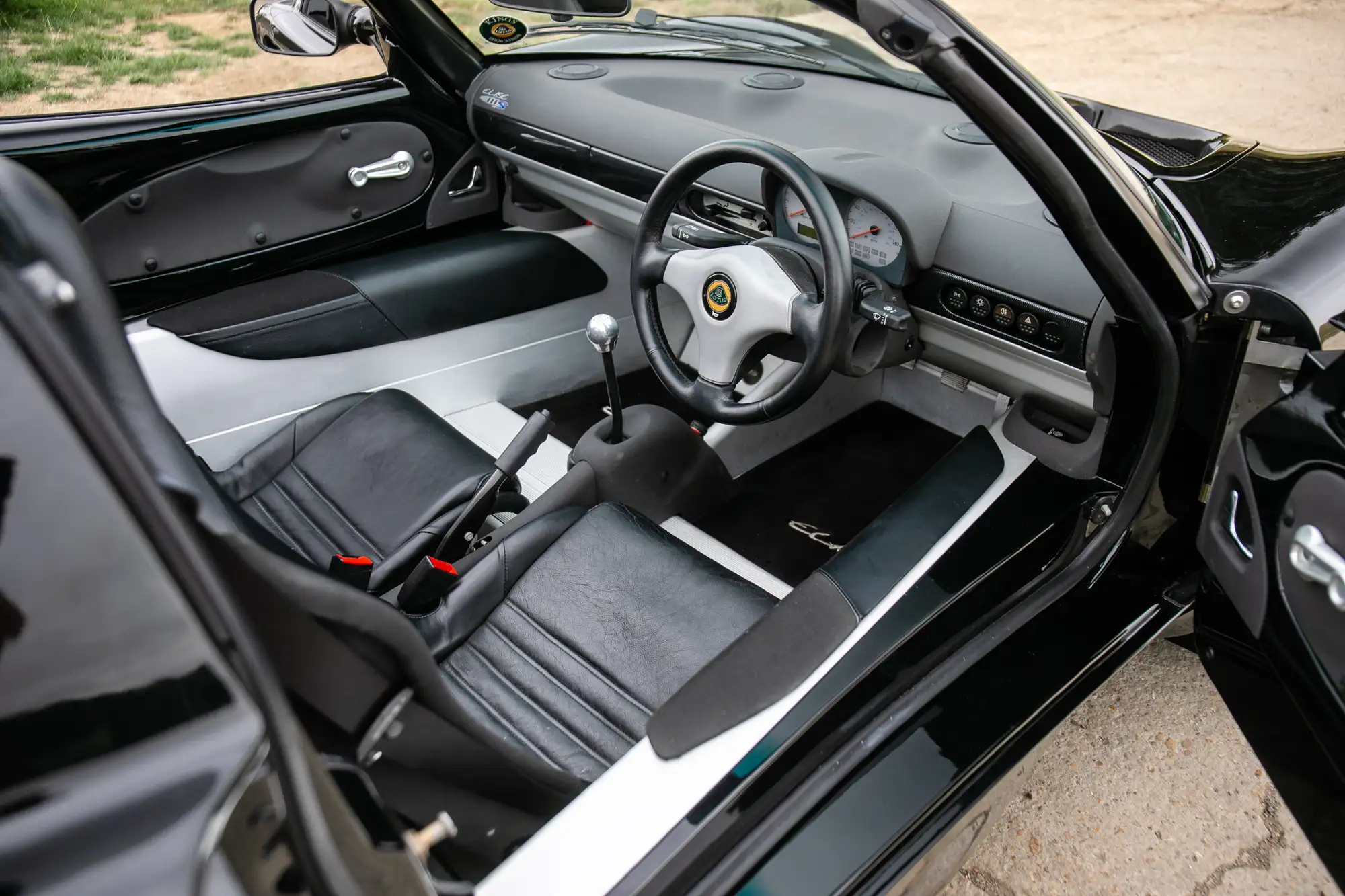
The interior is spartan, almost like the simplicity found in a Porsche 356 Speedster, which isn’t surprising as one of the designers was particularly taken with the Speedster’s low beltline and low seating position. A tiny binnacle for the instruments also reflects the designers’ love of motorcycles. Like the exterior, the interior of this Elise is clean and in good condition, with the exception of a deep mark near the Elise 111S badging on the dashboard.
Naturally, this car is right-hand drive, but given the car is a British make, it’s one I wouldn’t mind driving from the wrong side of the car.
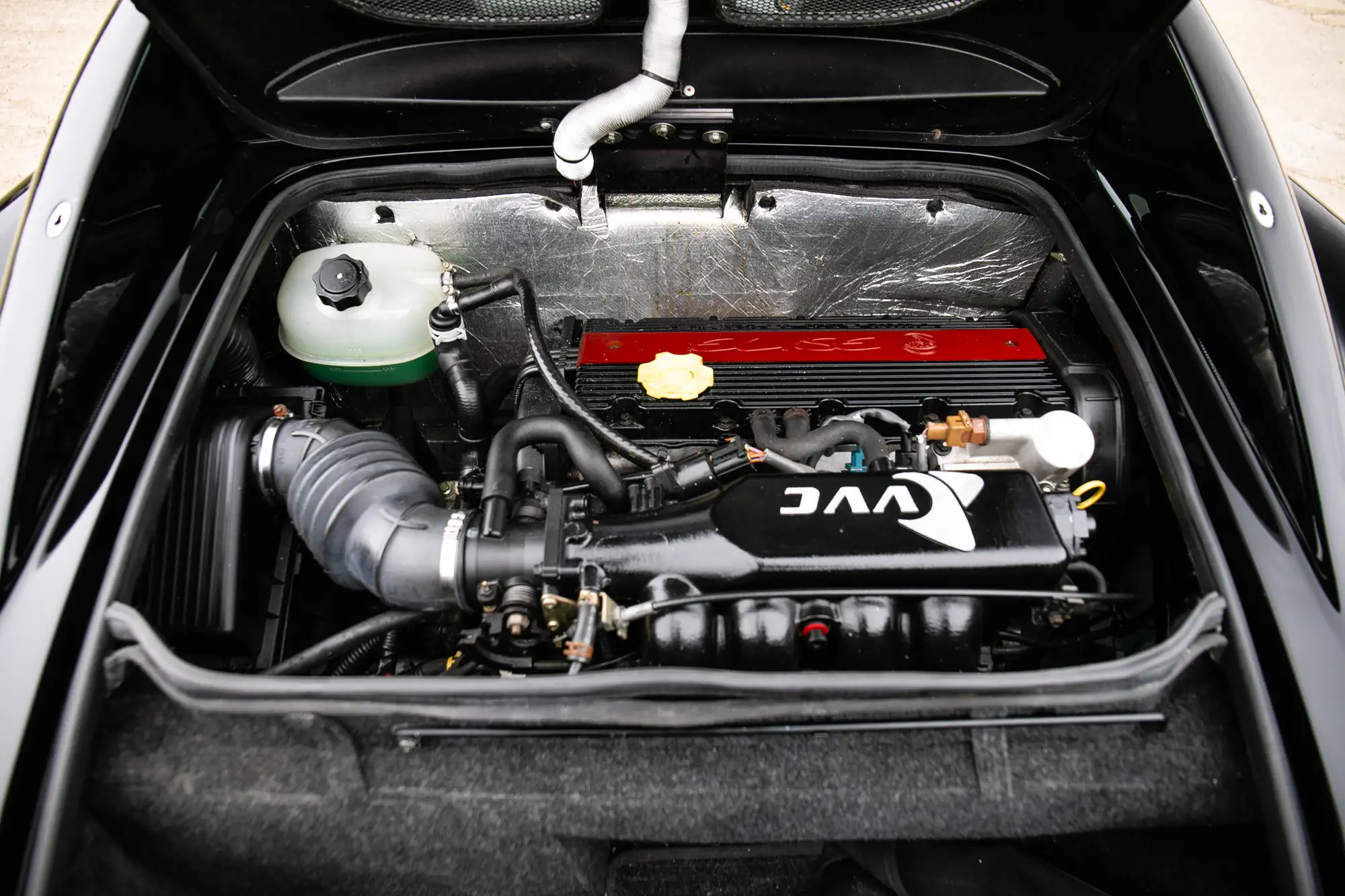
The Lotus Elise 111S was introduced in early 1999 and featured a higher horsepower 1.8 engine that put out 143bhp, which helped the car speed to 60 miles per hour in about 5.4 seconds. The engine was sourced from the Rover MGF and featured a variable valve timing system.
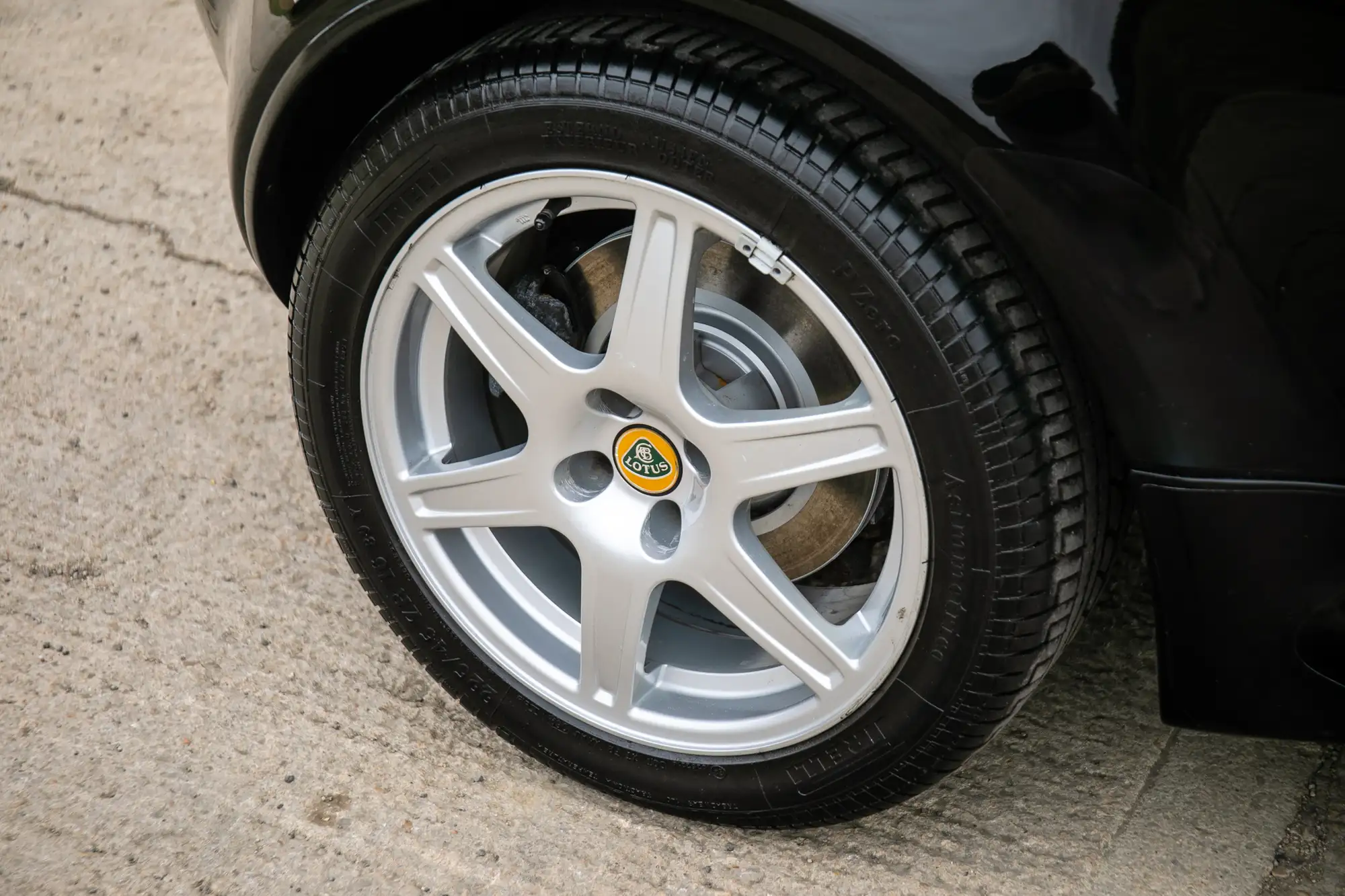
The Elise’s stellar handling was aided by fully independent upper and lower wishbones, coaxial coil springs over shock absorbers and aluminum uprights. Braking was provided by ventilated discs at all four corners squeezed by AP Racing calipers up front and Brembo in the rear. Wheels on the 111S model were a new 6-spoke design in a staggered setup.
This example is said to have received a clean MOT with recent service including a new battery, cam belt, water pump, front and rear brake pads, upper ball joint, brake lines, and an oil and filter change.
Market Snapshot
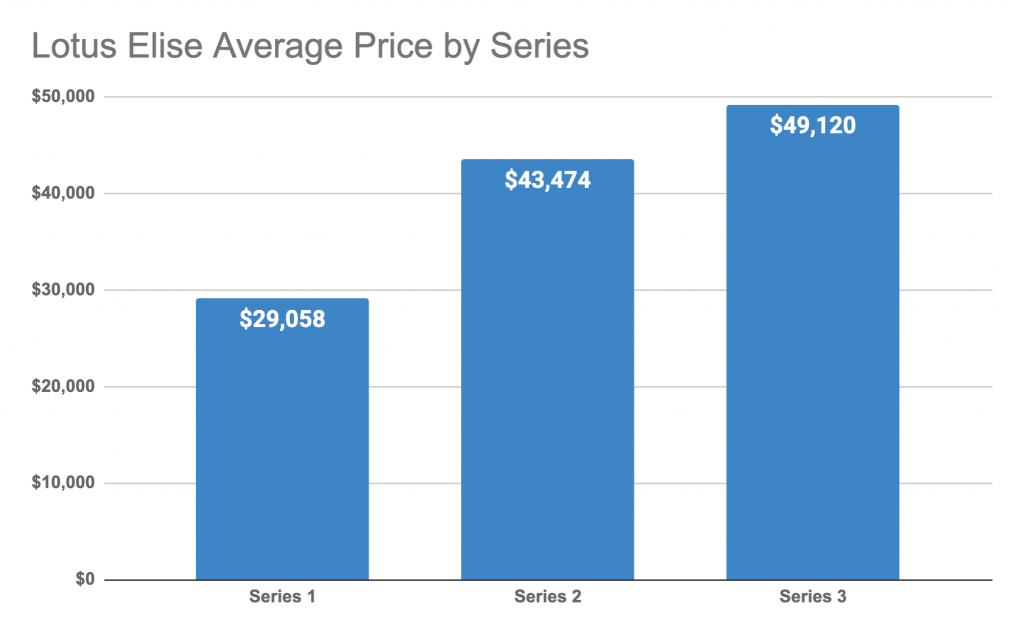
The Series 1 Lotus Elise retailed for around £26,590 at launch — depending on spec, of course. Today, the average prices of Series 1 cars hover around $30,000 USD, with values for Series 2 and 3 cars being worth a fair bit more. The last Lotus Elise to be offered in the United States was sold in 2011. The top sales over the last few years have been these final-year models of the Elise and Elise R.
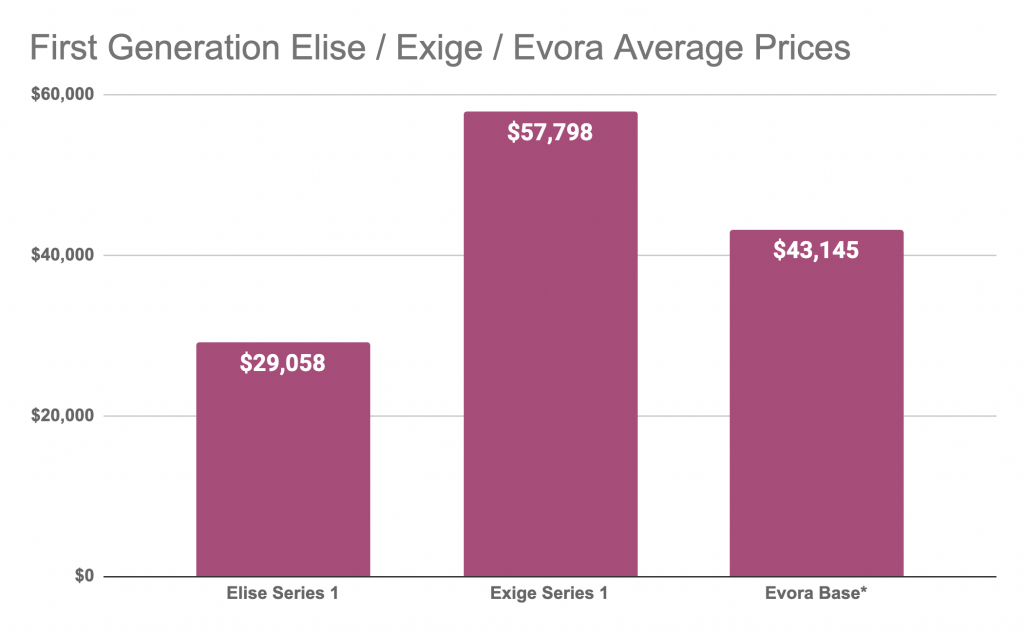
Looking at prices for the Elise’s contemporary models, the Exige commands higher prices than all Elises and the base Evora. Being a coupe at first, the hard-top is likely more desirable for enthusiasts despite the Elise’s impressive rigidity for an open car. The Exige also had a higher horsepower tune than the Elise and later added more aerodynamic bodywork.
Final Thoughts
Is the Elise a good buy? Values for the Series 1 Elise haven’t really suffered much during the post-pandemic market softening and remain pretty flat. The Exige, by contrast, has actually seen a fairly steady upward trend in value. If prices continue to rise for the Exige, the earlier generation of Elise may become more desirable and values could increase. Purchasing one today seems to be a pretty stable bet, especially one with low miles this today’s car.
As a bit of a design purist, I would very much love to own a Series 1 Elise. The later designs somehow feel even more dated to me than this original execution. As usual, though, I can’t fit in a small, low sports car like this one. The Elise could be possible, thanks to its removable roof, but I’m told the cockpit is rather cramped for folks my height.
The first generation Elise oozes analog charm and over time, I think enthusiasts will start to see its appeal even more, at least in Europe. With the later Elise being a better car on paper and the early generation never having been offered in the United States, it may not yet make sense to import these unless you fancy being one of the only ones this side of the pond.
What do you think — Is the Series 1 Lotus Elise a modern classic?
Wolf and Mare provides car finding, appraisal and auction services for sellers and buyers of collector European cars. We also provide importation services. Give us a call or drop us a line!

